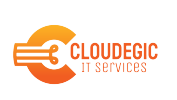Despite the popularity and the rising demand for mobile development, web development has been getting a tremendous amount of attention and the technologies are evolving quite rapidly. Javascript’s skyrocketing popularity brings a lot to the table, especially with the rise of new development concepts like Progressive Web Applications, Accelerated Mobile Pages, and Single Page Applications. However, things started to get more complicated, especially for young developers who are just getting started.
The sheer amount of available technologies to choose from, the different functionalities they provide, the differences in each one of them and the fact that there’s no holy grail in web development, nor a one solution fits all, all of this makes it quite scary to embark on a learning journey.
This is why we’ll attempt to demystify the process and shed some light on these different technologies here. Two common technologies in the web development world are Django and Laravel, which are back-end development frameworks.
But let’s slow down a second, and talk about what a framework is.
Frameworks
Frameworks are software abstractions. Abstractions are core concepts devoid of complexities and details. We actually deal with abstractions in our everyday life, not just in software. For example, if you want to drive your car, you don’t need to understand the thermodynamics of the engine and the energy cycles inside or even the complex mechanics of the car, you simply need to steer the wheel.
The benefit of using such abstractions in software is the fact that it helps young developers get into the game quickly and use the generic tools created by professional developers to their own need and hence they won’t have to reinvent the wheel on every single function that they might have.
Two famous software abstractions are Libraries and Frameworks. Libraries are a group of methods/objects that produce a certain functionality, and that you might use however you see fit, there’s no one way of using it. Frameworks, on the other hand, are stricter structures, that function as the skeleton of your application.
Frameworks help you skip the hassle of developing the low-level infrastructure and get right to the business logic of your application which results in a neater and more professional application.
There are fundamentally two categories of frameworks in web development:
Front-end frameworks
front-end frameworks address the client side development problems and mainly focus on CSS or JavaScript. Nowadays JavaScript frameworks like Vue.JS and Angular are the norm for developing web applications.
Back-end frameworks
Back-end frameworks are responsible for the server side logic implementation. The magic that takes place under the hood and brings your website together. How to deal with data, store data, how to manage responses and so on. There are a few core functionalities of back-end frameworks that we need to understand.
Routing: when your server receives a request, it has let a certain resource or a certain action handle it. If you visit mywebsite/products then the products controller should respond with the appropriate resource and so on.
Templating: Assuming you don’t use client-side frameworks like Angular and Vue.JS then you to make the views and fill them with data. The view is basically the page that the user sees on his browser, templating allows you to dynamically fill the page with data according to the data passed by the controller.
Note that there are many other design structures each of which has its own way of dealing with the view and its data.
ORM: ORM stands for object-relational mapping, which is the layer between your model and database that acts as a virtual object database.
There are other features as well, such as security, caching, scaffolding and creating resources and so on.
Django
Django is an MVT or a model view template framework built with python. It’s a free and open source framework that encourages rapid development and helps developers write efficient cleaner code. It’s quite a powerful framework and it’s used by some of the greatest enterprises in the world as their back-end infrastructure. These companies include Pinterest, Udemy, NASA, and Instagram.
Laravel
Laravel is an MVC or model-view-controller framework built with PHP which is one of the most famous languages of the web. It’s also a powerful framework used by 9GAG, UNION, Toyota Hall of fame.

